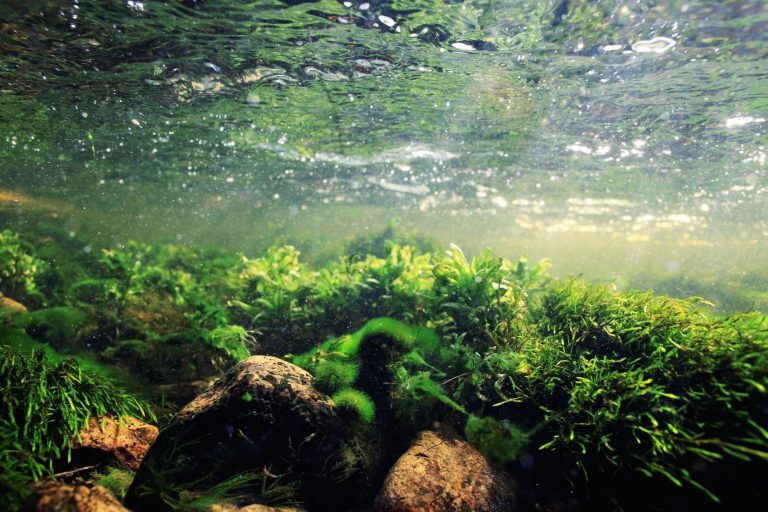Lotic Communities & Algae

Lotic community of algal species
In general, the diversity of plant species in a lotic community is small compared to that of a still water (lentic) community although small parts of the lotic community host similar conditions to that of a lentic community. Most plants have gone through evolutionary adaptations to cope with the force and different conditions that running water brings. Such adaptations have allowed a number of species to successfully take advantage of the lotic community as their ecological niche.
As these conditions are harsher for a typical species of plant, more notably larger plants, smaller species have found the conditions of the lotic community more favorable. This is due to the fact that they are more flexible in regards to the physical conditions of the water. Algae can grow in all sorts of different places and surfaces, and therefore are a successful constituent of the running water ecosystem. Most of these algae have developed evolutionary adaptations over time that prevent the water current sweeping them away.
You may want to learn more about natural selection if you are unfamiliar with evolution and adaptation
There are many species of algae, all of which are capable of growing and reproducing at a quick rate. This consequence results in competition for niches in the freshwater environment, and in light of this, colonies of algae can heavily occupy one area at one moment in time and weeks later they can be succeeded by another species who can succeed in the conditions more favorably.
Algae are also the primary producers of this community, meaning they harness new energy into the ecosystem from the sun which provides the primary consumers with a valuable food source. With this in hand, it is apparent why algae populations and where they can be found in the lotic community is variable on a short-term basis.
You will also like...
Animal Water Regulation
Animals adapt to their environment in aspects of anatomy, physiology, and behavior. This tutorial will help you understa..
Plant Water Regulation
Plants need to regulate water in order to stay upright and structurally stable. Find out the different evolutionary adap..
The Water Cycle
The water cycle (also referred to as the hydrological cycle) is a system of continuous transfer of water from the air, s..
Adaptation Tutorial
Adaptation, in biology and ecology, refers to the process or trait through which organisms or the populations in a habit..
Plant Biology
Plantlife can be studied at a variety of levels, from the molecular, genetic and biochemical level through organelles, c..
The Origins of Life
This tutorial digs into the past to investigate the origins of life. The section is split into geological periods in the..